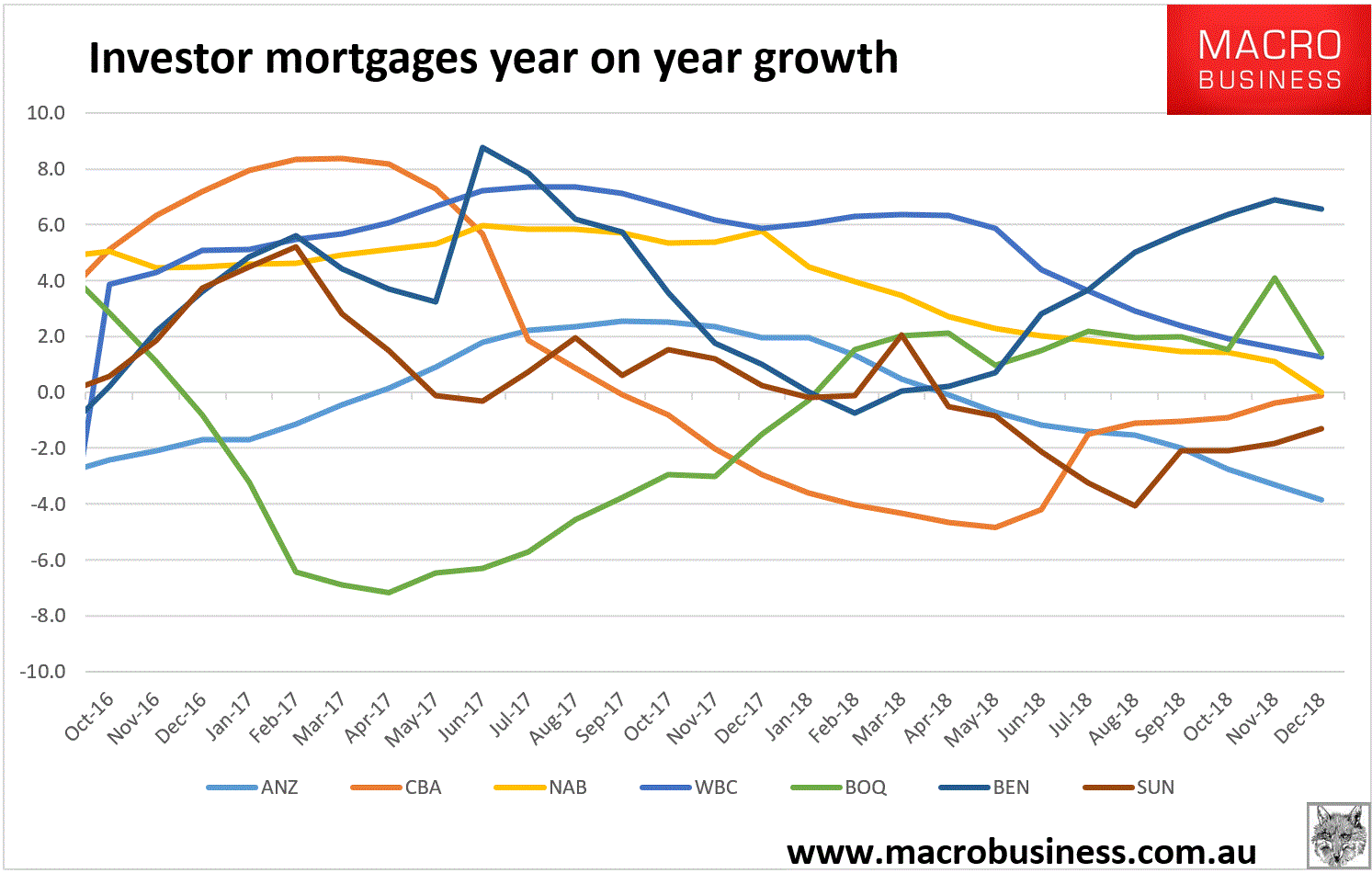It shouldn’t because he’s talking nonsense. Via Bluenotes:
The fall in Australian house prices in 2018 was the largest since the financial crisis. But the implications for the broader economy are more important.
It’s even possible that weaker house prices and a weaker economy combine into a negative feedback loop (although in my view this is unlikely).
“All previous periods of declining house prices were associated with significant slowdowns in public demand.”
Typically when house prices are falling there is plenty going wrong elsewhere. Prior to the current episode, house prices fell in 1982, 1990, 1995, 2004 (very briefly), 2008 and 2011. All except 2004 were associated with either an Australian recession, near-recession or significant global slowdown.
While global growth has slowed over the past year it remains above trend and strong enough to drive reduced unemployment in virtually every advanced economy. The Australian economy has also slowed but most indicators suggest it is running strongly enough for unemployment to fall further.
Policy drivers
This housing downturn was sparked largely by a tightening in prudential policy, which has a narrow and direct impact. It was not driven by monetary policy, where the impact is broad. On this occasion both monetary and fiscal policy are in fact adding to demand, whereas historically policy has tended to be tightening when house prices have started to fall.
Today interest rates are very low and the exchange rate is providing stimulus. The AUD in trade-weighted terms is the weakest since coming out of the financial crisis in 2009.
In addition, all previous periods of declining house prices, with the exception of 2004, were associated with significant slowdowns in public demand. Yet since 2015 demandhas been growing at between 4 per cent and 6 per cent. With the federal budget on the verge of returning to surplus, spending could strengthen even further. Direct bottom-up support for the housing market is not difficult to envisage.
Indeed, because balance-sheet-driven downturns in the economy are so potentially damaging and typically long lasting, further extended house price declines are likely to increasingly justify policy action.
Australia is already seeing some movement. In December, APRA removed the interest-only lending restrictions introduced in March 2017.
But more broadly, as bottom-up prudential standards tighten, some of the standards that essentially provided top-down insurance on the lending process could be loosened.
There is precedent for this.
History repeating
Earlier in 2018 APRA removed the benchmark on investor lending, subject to banks meeting more stringent bottom-up lending standards. Another example might be the mortgage interest-rate buffer introduced in 2014 which mandates an interest-rate floor of ‘at least’ 7 per cent compared with current variable mortgage rates at 5 per cent. The floor seems to have been based on the idea Australia is in a historically anomalous ‘low-interest-rate environment’.
However as time passes historical precedent seems less and less relevant, as has been the case in many other economies post-crisis. A 200 basis point increase in interest rates seems untenable in the current cycle, let alone anything materially larger. The irony is by continuing to impose such a strong top-down prudential standard at the same time as bottom-up standards are tightened, APRA is making any meaningful increase in interest rates much less likely.
There are some winners from house-prices decline – first-home buyers an obvious one. That activity has picked up sharply since 2017 and now makes up nearly a fifth of finance approvals. There are also plenty of home owners who don’t watch every ripple in the housing market. A third of households have no mortgage and a third of those with mortgages are more than two years ahead of their payments. For them, jobs and wages are much stronger drivers of their behaviour.
Hold or fold
On this basis there appears to have been little forced selling, at least in a macro sense. While much has been made of the increased number of properties for sale, this reflects the slow pace of sales for existing stock rather than a rush of new stock coming to market. CoreLogic data show new property listings were down over the past year in both Sydney (-10.9 per cent) and Melbourne (-17.3 per cent).
Provided prudential standards are correctly calibrated for the tightening in bottom-up standards, forced sellers in the housing market shouldn’t be sufficient to turn what really has been a textbook adjustment so far, into something much worse.
“Textbook adjustment”? Who is he trying to kid? When did we last see:
- Bank funding costs implying at least 50bps of further mortgage rate hikes to support bank margins directly into a house price bust?
- Lending standards tightening despite eased macroprudential with further tightening ahead through 6x DTI and more interest only resets?
- The end of the HEM, more ongoing tight lending standards, as well as mooting a major reduction in competition via broker reform?
- The end of negative gearing?
- A supply deluge?
- Exiting Chinese capital egged on by Cold War 2.0?
- All without any rate hikes nor an external shock?
The reasoning is also dodgy. The number of property listing tells us nothing about whether or not they’re distressed and its stock not flow that matters. Nor is the health of budget spending the pivotal question for house prices given government spending is only one quarter of the economy. For what it is worth, public infrastructure spending is about to stop adding to jobs and growth, plus state budgets are getting smashed by the stamp duty crash and will have to cut back. The federal budget is still supportive.
I can only note that ANZ has applied the strictest lending standards of all majors post-Hayne, quite rightly, so somebody in the bank ain’t listening to Richard Yetsenga:

Neither should you!

